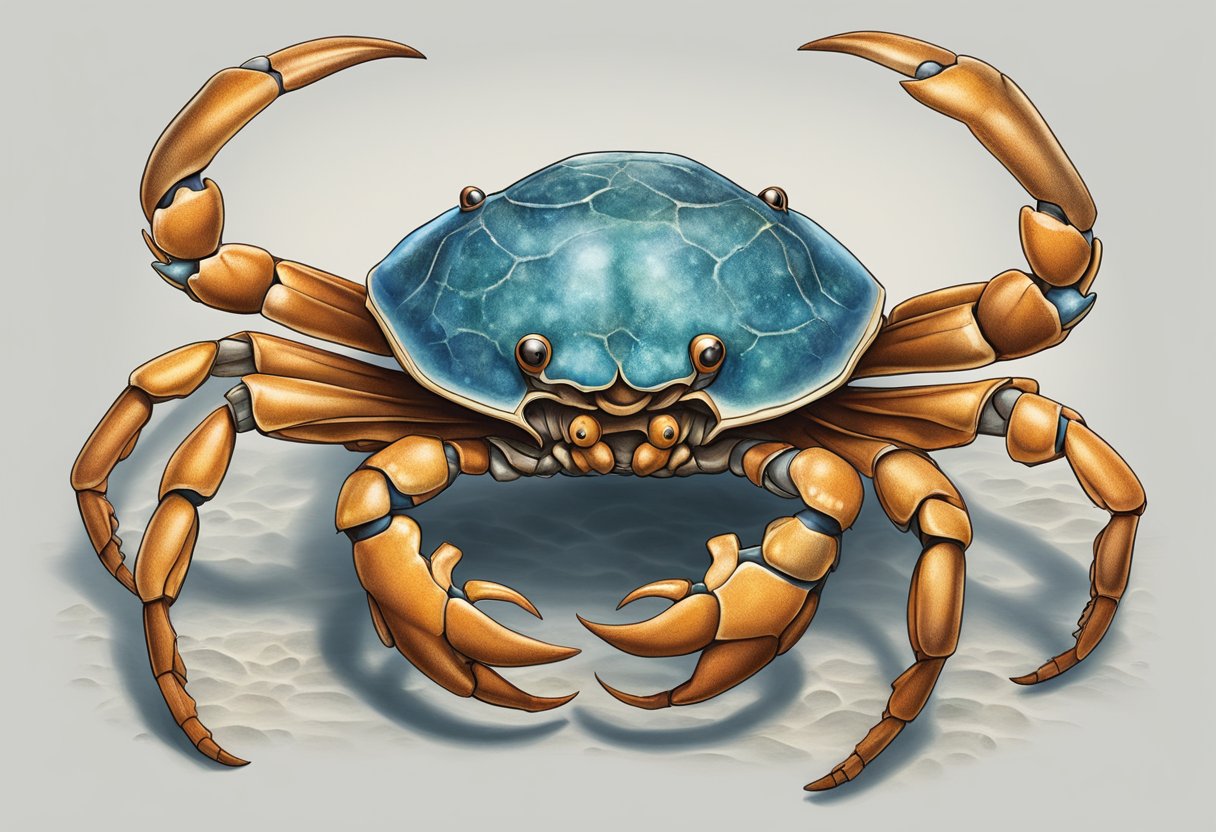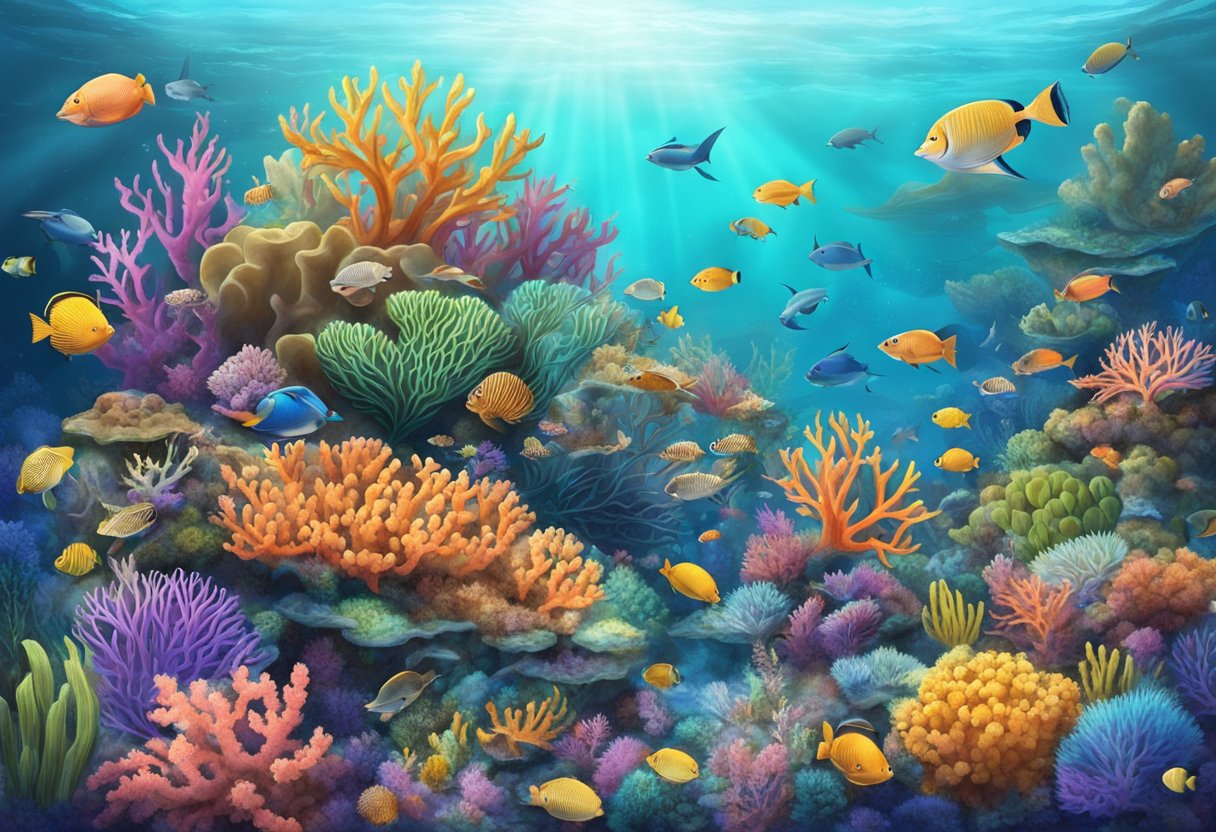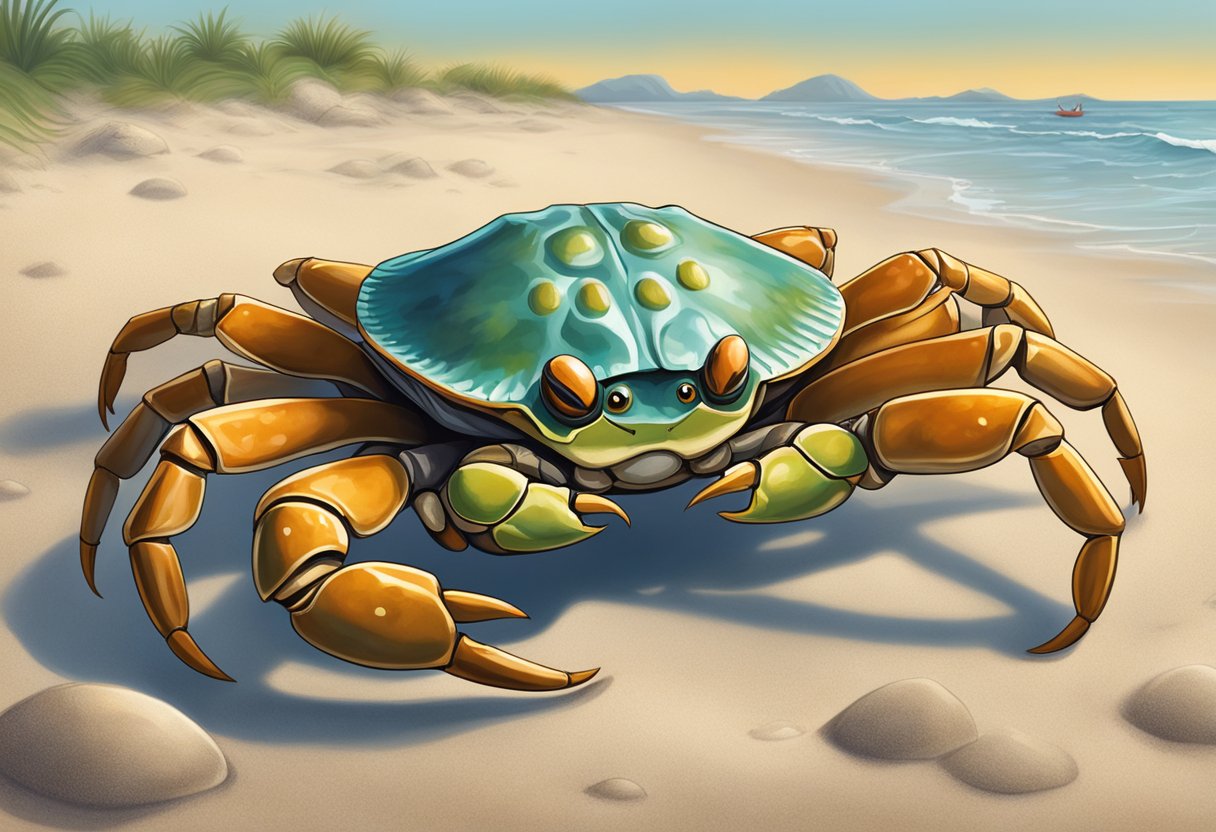If you've ever eaten a lobster, crab, or shrimp, then you've had a crustacean. Crustaceans are a diverse group of invertebrates that are found in a variety of aquatic habitats. They are part of the phylum Arthropoda, which also includes insects, spiders, and centipedes.
The body of a crustacean is composed of segments, which are grouped into three regions: the cephalon or head, the pereon or thorax, and the pleon or abdomen. Crustaceans have two pairs of antennae and jaws, and they breathe through gills. Some species are important for human food and ecology, while others serve as prey for larger animals.
Key Takeaways
- Crustaceans are a diverse group of invertebrates found in aquatic habitats.
- Their body is composed of segments and they have two pairs of antennae and jaws.
- Some crustaceans are important for human food and ecology, while others serve as prey for larger animals.
Biology and Anatomy

Crustaceans are a diverse group of arthropods, which means they have a segmented body, jointed limbs, and a hard exoskeleton. They are found in a wide range of habitats, including freshwater, saltwater, and land. In this section, we will discuss the morphology and anatomy of crustaceans.
Morphology and Exoskeleton
Crustaceans have a three-part body consisting of a head, thorax, and abdomen. The head and thorax are fused together to form a cephalothorax. The exoskeleton of crustaceans is made up of chitin, a tough, protective polysaccharide. The exoskeleton is shed periodically, a process called molting, to allow for growth.
Crustaceans have a variety of appendages, including antennae, mandibles, maxillae, and walking legs. The number and shape of these appendages vary depending on the species. For example, lobsters have large claws for capturing prey, while shrimp have long, slender legs for swimming.
Respiratory and Circulatory Systems
Crustaceans have gills for respiration, which are located on the legs or in the cephalothorax. The gills extract oxygen from the water and release carbon dioxide. The circulatory system of crustaceans is open, meaning that the blood is not contained in vessels. The heart pumps blood into the hemocoel, a cavity in the body, where it bathes the organs and tissues.
Sensory Organs and Nervous System
Crustaceans have a well-developed nervous system and sensory organs. They have two compound eyes on the head that can detect light and movement. The eyes are made up of many tiny lenses, which allow for a wide field of vision. Crustaceans also have antennae that are used for sensing touch, taste, and smell. The nervous system of crustaceans is similar to that of other arthropods, with a brain and ventral nerve cord.
In conclusion, crustaceans have a fascinating biology and anatomy. Their morphology, exoskeleton, respiratory and circulatory systems, and sensory organs and nervous system are all unique and adapted to their varied habitats.
Diversity and Habitat

Classification and Species
Crustaceans are a diverse group of arthropods that belong to the phylum Arthropoda. They include crabs, barnacles, copepods, shrimp, ostracod, decapods, shrimps, lobsters, crayfish, malacostraca, larvae, lobster, branchiopoda, cephalocarida, remipedia, and more. There are over 67,000 species of crustaceans, making them one of the most diverse groups of animals on the planet.
Adaptation and Distribution
Crustaceans are adapted to a wide range of habitats, both freshwater and marine. They have a hard exoskeleton that protects them from predators and helps them retain moisture. They also have jointed appendages that allow them to move in different directions and adapt to their environment.
Crustaceans are found in almost every aquatic environment, from the deep sea to freshwater rivers and lakes. They are also found in intertidal zones and benthic habitats. Some species, such as copepods and ostracods, are very small and abundant, while others, such as the Japanese spider crab, are large and highly prized by fishermen.
Life in Freshwater and Marine Environments
Freshwater crustaceans include species such as crayfish, prawns, and some species of shrimp. These species are adapted to living in freshwater environments and are often found in rivers, lakes, and streams. They play an important role in the freshwater ecosystem, serving as prey for larger fish and other aquatic animals.
Marine crustaceans are found in a wide range of marine habitats, from shallow rocky habitats to deep-sea hydrothermal vents. They include species such as crabs, lobsters, and shrimp, and are an important food source for many marine animals, including fish, birds, and mammals.
Overall, crustaceans are a diverse and fascinating group of animals that play an important role in aquatic ecosystems. Their adaptation to different habitats and their ability to thrive in a wide range of environments make them an important part of the natural world.
Frequently Asked Questions

What distinguishes a creature as a crustacean?
Crustaceans are a subphylum of arthropods that include animals such as crabs, lobsters, shrimps, and barnacles. They are primarily aquatic and have a hard exoskeleton, jointed limbs, and two pairs of antennae.
Can you list some common examples of crustaceans?
Some common examples of crustaceans include lobsters, crabs, shrimps, barnacles, crayfish, and krill.
What are the defining characteristics of crustaceans?
Crustaceans are characterized by their hard exoskeleton, jointed limbs, and two pairs of antennae. They also have gills for breathing and a digestive system that includes a stomach and intestines.
Is a prawn considered a crustacean, and if so, why?
Yes, prawns are considered crustaceans because they have the defining characteristics of the subphylum, including a hard exoskeleton, jointed limbs, and two pairs of antennae.
How do you properly pronounce 'crustacean' in British English?
In British English, 'crustacean' is pronounced as 'kruh-stay-shun'.
Could you name a few crustaceans commonly served in restaurants?
Some crustaceans commonly served in restaurants include lobsters, crabs, shrimps, and prawns. These are often served as seafood dishes and are considered a delicacy in many parts of the world.

